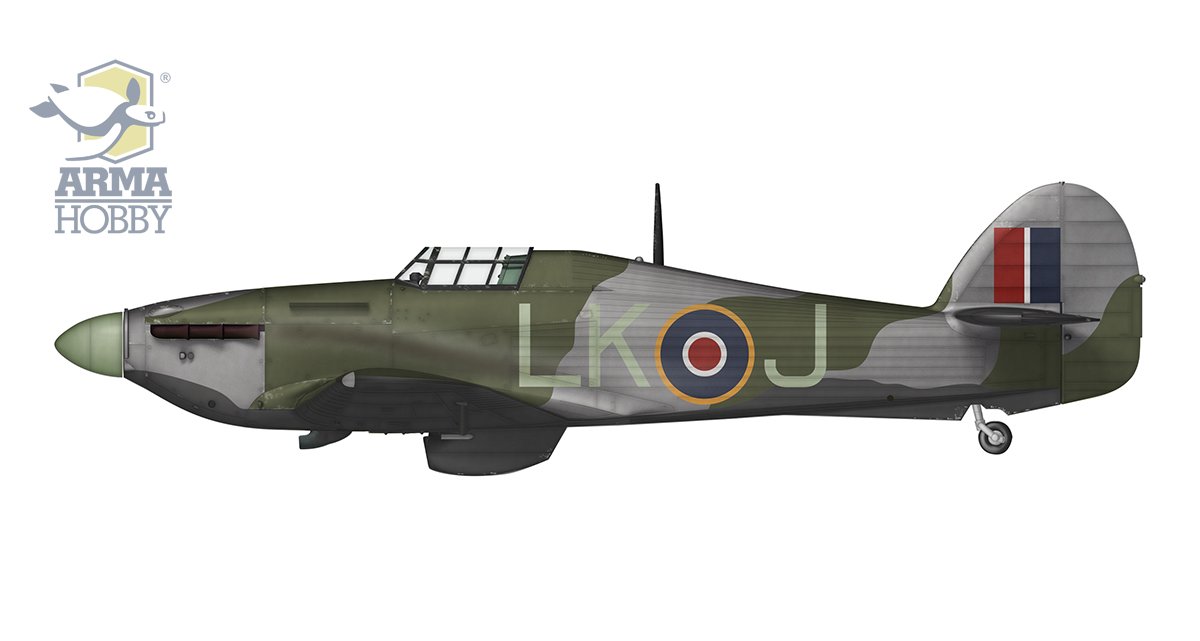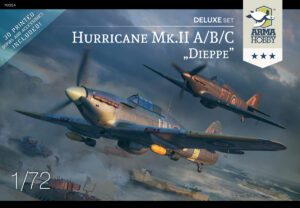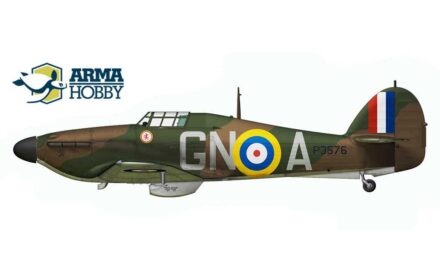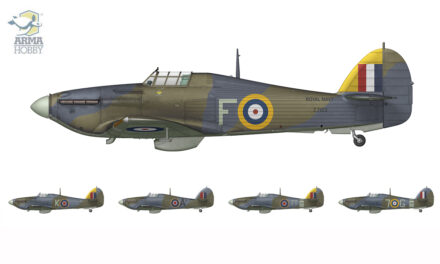Thanks to the co-operation of Marek Malarowski, the pilot’s son, Piotr Sikora has been able to precisely describe the career of F/L Andrzej Malarowski in an in-depth article published in “Lotnictwo z Szachownicą”. Here I will limit myself – with the author’s consent – to what I consider to be the most interesting events from Malarowski’s period of service.
Editorial note: The participation of Polish airmen in the “Jubilee” operation is widely known and described in detail, but it mainly includes strictly fighter squadrons, then equipped with the Spitfires, which scored many victories there. The figure of Andrzej Malarowski is therefore unique: he flew the Hurricane, in a British squadron, carrying out ground-attack operations over Dieppe! Let’s get to know his biography!
Andrzej Malarowski was born on 11 February 1911 in Łódź. In 1930 he took his first steps as an airman at the Łódź Flying Club, having as his instructor no one other than Franciszek Żwirka himself. Already a year later, he was serving with 131 Fighter Squadron in Poznań.
After completing a piloting course at the Aviation Training Centre for Non-Commissioned Officers in Bydgoszcz, he was assigned to 34 Line Squadron, where he flew Potez 25s. Doubtless his superiors recognized that the young, aggressive airman (he was also a successful boxer) had fighter-pilot potential, for he was returned to 131 Fighter Squadron, which at the time operated the PWS-10, switching to the PZL P.7a in 1933. On 5 July 1934, he parachuted to safety after his aircraft collided in mid-air with another fighter. In 1938, after passing his school-leaving exams and already possessing a few years’ experience as a pilot, he was accepted to the Aviation Officer Cadets School in Dęblin. He was promoted to the lowest commissioned rank a day before the outbreak of the Second World War. At the time, P/O Malarowski served with 161 Fighter Squadron. He had his baptism of fire on 2 September, when, while flying in a section led by P/O T. Koc, he attacked a lone Dornier Do 17Z, however his opponent managed to fly away, making use of his better speed. A day later, on 3 September 1939, he was wounded in an aerial battle. After the evacuation to France, he underwent training on the Koolhoven F.K.58 and was appointed commander of a section defending Clermont-Ferrand. The next evacuation, this time to England, which took place towards the end of June 1940, was followed by a lengthy period of training, this time for the night-fighter role, and upon its completion he was assigned to No. 307 Squadron RAF, which operated the Boulton Paul Defiant. Being a “driver” for the gunner was not much to the liking of many pilots, and twelve of them were sent to No. 303 Squadron RAF, where they received instruction on the Hawker Hurricane.
Hurricane Mk IIc – myśliwiec na każdą porę, w nocy i w dzień
As it turned out, P/O Malarowski would fly this type right until January 1943. On 15 December 1940, while serving with No. 43 Squadron RAF, he experienced an engine failure and was forced to bail out into the cold waters of the Firth of Forth. In March 1941, he was detailed to No. 317 Squadron RAF and took part in offensive missions over France. In September 1941, he received a reassignment to No. 87 Squadron RAF, with which he was to fly in Operation Jubilee. According to his log book, he performed two flights over Dieppe on Z2643.

Andrzej Malarowski’s Hurricane Mk.IIA LK-J. The aeroplane has its Z2643 serial overpainted during hasty application of the daylight camouflage to the night fighters for the operation over Dieppe
He returned from the second with a punctured fuel tank, landing at Tangmere on the last drops of petrol. The German bullet that was recovered in the course of repairs became a memento that his family treasures to this day.

F/Sgt Malarowski at Tangmere airfield with colleagues from the various squadrons participating in Operation Jubilee. Photograph taken on 19 August 1942. A fighter from No. 43 Squadron RAF is visible in the background

The picture shows the international composition of the Allied participants of Operation Jubilee

HL864/LK-? in the background. The rudder shows the differences between the grey camouflage hues

The bullet that was removed from the punctured fuel tank of Z2643. Maybe someone can identify the weapon it was fired from?

A page from Malarowski’s Log Book, August 1942. Operational flights nos 13 and 14 were carried out during “Jubilee”
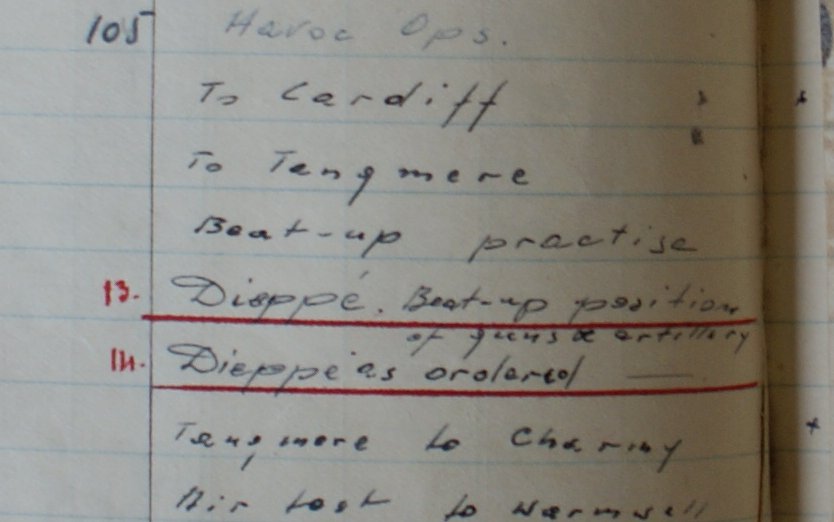
Close-up of the Malarowski’s Log Book with the Dieppe missions marked with red
After No. 87 Squadron RAF was transferred to the Mediterranean, Malarowski, now seconded to No. 533 Squadron RAF, continued flying as a night fighter in Turbinlite teams; he remained with this unit until is disbandment in the last days of January 1943. In March 1943, after a few weeks spent with No. 264 Squadron RAF, which operated the de Havilland Mosquito, he became an instructor at 16 (Polish) Service Flying Training School in Newton. He was also promoted to Flight Lieutenant. But since the Polish Air Forces in Great Britain used the Polish promotion system in parallel to the British, a year later, in March 1944, Malarowski was also advanced to the rank of captain. In September 1944, after nearly four years, he returned to No. 303 Squadron RAF, taking command of a flight. He flew in combat on the Spitfire Mk.IX and, from April 1945, the Mustang Mk.IV. He served with the unit until its demobilization. Andrzej Malarowski was awarded the (Polish) Cross of Valour. After the war, he remained in the RAF, working as an instructor until his retirement in 1956. Living in England, he started a family, and had two sons. He died on 4 October 1985.
Sources:
- Piotr Sikora “Kapitan Malarowski 1911–1985”, “Lotnictwo z Szachownicą” nos 41 and 42.
- Łukasz Łydżba Lwowski III/6 Dywizjon Myśliwski
- All photographs from the collection of Piotr Sikora
See also:
- Check Hurricane Mk IIA/B/C “Dieppe” Deluxe Set and more in the Arma Hobby online store
Model maker for 45 years, now rather a theoretician, collector and conceptual modeller. Brought up on Matchbox kits and reading "303 Squadron" book. An admirer of the works of Roy Huxley and Sydney Camm.
This post is also available in:
 polski
polski


